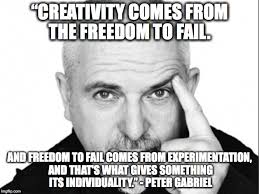https://www.slideshare.net/secret/rD8sWpLloo3rrG
I worked with the Article written by Ashley Hincks “Digital Ghosts in the Modern Classroom.” I decided to create a slide deck with a voice-over to break down the key messages within.
The main ideology of the article is to criticize the use and adaption of modern “template” based software in schools. The reasoning being that they are no different than a worksheet, serving only to have students fill in blanks to guide them step by step to a pre-completed object. The problem is that this removes a personality or creativity on the part of the student in the creation process. The critique is that this software operates in the same fashion as a teachers worksheet. the student follows along and makes the “correct” product at the end that’s already been pre-molded by the teacher or someone else.
I personally believe that this article may speak truth to an uncomfortable reality in schools. in all my formal education cation teachers encouraged us to use any tool traditionally found in the Office suite of software. they did so because these tools allowed so creativity so we could express ourselves and connect with knowledge but still limited us in what we could do. These teachers did this because these tools were easy to use and functional and practical to be implemented for the assignments. As a result now as an adult, I can operate and function competently in these areas, but not much else and many other students are the same. There’s no creativity, no uniqueness to our work. we all have the same mediocre abilities and competency when it comes to these technologies. Now compare this to those of us who did have access to more open software in younger years and the difference is noticeable. students engaged with open software can think my critically because of the challenge involved in the software’s operation, and as a result, these students have better skills and are more valuable as assets.
I rather enjoyed my work with the article, I chose to use the tried and true slide deck method, because it allowed me to both highlight basic info and graphic images to be appealing and quick to comprehend, but also involved an audio overlay so I could expand and explain deeper on each slides meaning. While I do feel that there could be more “flashy” additions added I lack the skill to do so. which is personally fine as I m old fashioned and prefer to not cover my works in flashy eye candy just for the sake of doing so. I feel that the software used was open enough that I could create as I needed and if I honed my skills more I could, over time, improve the overall product.
I will probably try to incorporate this article and this technologies lesson into my teaching to some extent. But in all honesty, I do have to recognize that I will also most likely rely on tried and true templates as well because even though the article points out several good critiques, it does fail to realize that lessons have time restrictions, and so do teachers. As a result, I’m going to use whatever is fastest, easiest, and effective to teach lesson. While I did enjoy the articles critique and will incorporate the idea of more “open” tech, I do recognize that it has its place in my class only in some roles/aspects. But to be incorporated on a large scale is impractical as it requires too much effort as a teacher, and to much student time, to be worthwhile.


